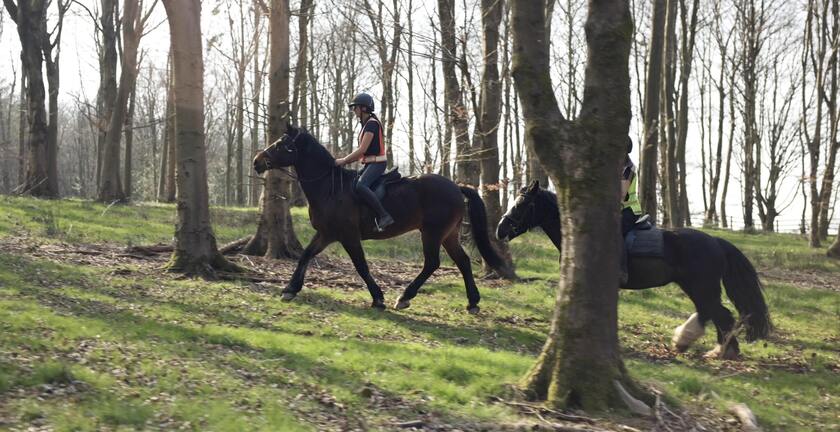
Straight from the Horse’s Mouth

We know that embarking on your riding journey is an exciting time, but it can also be daunting deciding which kit is worth the investment and what you can do without.
Our advice is always to find your feet before you part with your pennies and focus on the essentials. As a beginner, you’ll need comfortable trousers that you can move around in, leggings or jogging bottoms are perfect, and a decent pair of gloves with pimples on the palms – you can usually purchase these for around £1.50 from the market. Remember to dress for the weather, avoiding strappy tops, and don’t forget a suitable pair of shoes or boots with a slight heel, not trainers. Now, you’re pretty much good to go!
Once you’re feeling confident in the saddle and are ready to build on your riding experience, here’s our advice for navigating the tack shop…
Make a head start
While there are plenty of options when it comes to riding kit, the most important investment is a good riding hat. You’ll need to ensure that this fits well and carries the required safety standards before you saddle up. If you’d like to try before you buy, here at Shardeloes Farm, we can provide hats for beginner riders and offer advice on the best ones to suit your needs. When you’re ready to make that purchase, a good tack shop should have a professional BETA-trained hat fitter that can help you find a helmet that suits your level of experience. You’ll usually have the choice of a peaked helmet or jockey skull but both are equally suitable for beginners.
Get booted
The second piece of essential kit for any new rider is a good pair of riding boots. An obvious benefit of decent footwear is that it will cushion the blow if a horse stands on your foot, but it can also support your feet in the stirrups and improve your riding position. Wellington boots, trainers and casual boots usually provide too much grip, so opt for a less-grippy sole with a small heel to prevent your foot from slipping through the stirrup. Options on the market include long riding boots that prevent rubbing on the inside leg or short ankle-length boots that allow more flexibility at the ankle. Whatever type of boot you opt for, remember comfort and a good fit are key, particularly if you’ll be wearing them over long periods of time.
Dress for the occasion
To ensure optimum comfort in the saddle it’s important that your legwear measures up. Jodhpurs are a popular option and usually come in a range of colours for more discerning riders - some even have a built-in grip to prevent slipping while riding. Riding leggings are often considered a more comfortable alternative to jodhpurs and will help prevent your legs rubbing against the saddle during your lesson. Many brands feature highly-breathable, technical fabrics but as long as your legwear is stretchy, flexible and lightweight, you should be good to go. It’s not unusual for your hands to become prone to blistering when you begin your riding journey, so it’s also worth considering a good pair of riding gloves. These should be grippy and stretchy but thin enough for you to be able to feel the reins in your hands.
Here at Shardeloes Farm, we’re proud to provide top-class tuition for riders of every ability. Comfort and safety are a main priority so if you would like any help or advice on how to start your riding journey, don’t hesitate to get in touch on 01494 433 333.

Get in touch, we’re all ears
To learn more about the complete range of facilities we have available at Shardeloes Farm, or to book one of our equestrian services, get in touch:
GET IN TOUCH
